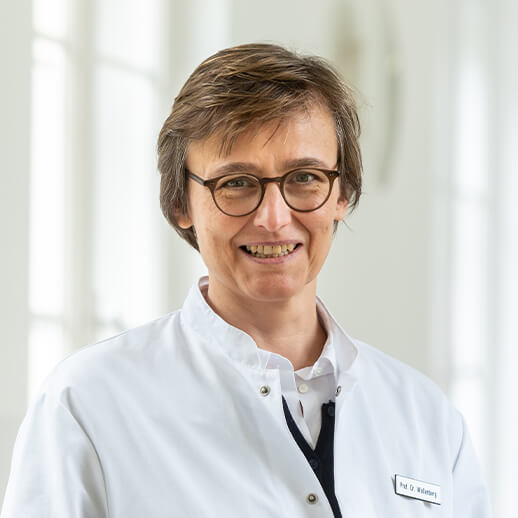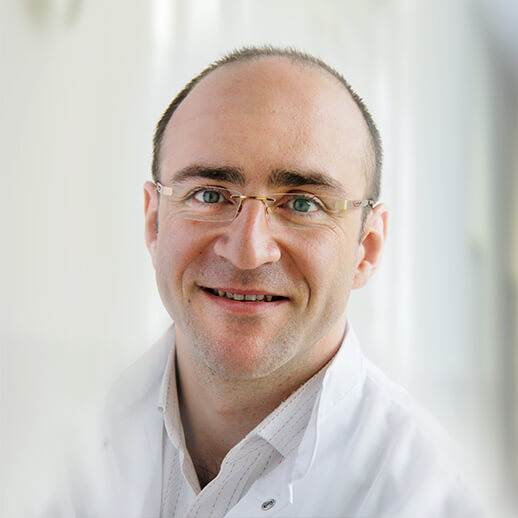Skull base – navigation surgery
Navigation systems in head and neck surgery
Four of the five known human senses are located in the ENT area: Hearing, seeing, tasting and smelling. Every day we operate on these sensory organs and other vital structures such as central blood vessels and nerves, the brain and the spine. In the case of repeat operations, particularly difficult operations and anatomical peculiarities in the paranasal sinuses, at the base of the skull and in the orbit, we perform the operation using computer-assisted navigation (Computer Assisted Surgery = CAS). For this purpose, a special computed tomography (CT) and/or magnetic resonance imaging (MRI) is performed, which can be read by the computer. The CT or MRI images of the patient taken before the operation are brought into agreement with his or her position in the operating room by means of two infrared cameras. Using planning software, the operation can then be precisely planned in advance, so that all relevant areas can be adequately rehabilitated with maximum safety. During the operation, the surgeon has, in addition to the endoscopic or microscopic image, a constant overview of the anaromy and the adjacent structures on a large computer monitor. The 3D visualization provides information about those structures that are hidden behind the visible layers. In the area of the brain, the eyes, nerves and vessels, it is now possible to operate precisely in the millimeter range.
Skull base surgery
In otorhinolaryngology, the base of the skull is divided into two areas - the laterobase with the ear as the central organ and the frontobase with the nose, the paranasal sinuses and the orbit (eye socket) as central organs. Surgery in this region is generally an interdisciplinary task, in which we work in close cooperation with the clinics of neurosurgery, ophthalmology, maxillofacial surgery, pediatric surgery, neuroradiology and radiotherapy at the Klinikum rechts der Isar.
After extensive imaging diagnostics, interdisciplinary cooperation and planning of the further procedure takes place in order to provide comprehensive treatment of the patient before, during and after an operation. Helpful here is the use of our computer-controlled navigation device during the operation, which provides a direct access route, a good orientation aid and thus enables the planning and execution of the most complicated skull base interventions. Diseases of the skull base are inflammations, fractures and especially benign or malignant tumors, which originated in the skull base, settled there or grew into it.








